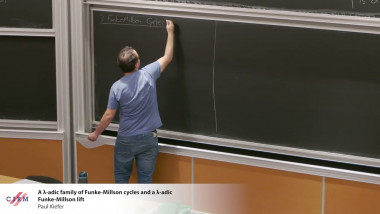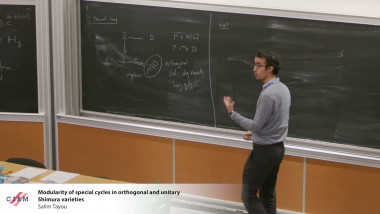
A $\lambda$-adic family of Funke-Millson cycles and a $\lambda$-adic Funke-Millson lift
De Paul Kiefer

Modularity of special cycles in orthogonal and unitary Shimura varieties
De Salim Tayou
Apparaît dans les collections : Arithmetics, geometry, cryptography and coding theory / Arithmétique, géométrie, cryptographie et théorie des codes, Exposés de recherche
Let $E$ be an elliptic curve over a number field $K$. For each integer $n > 1$ the action of the absolute Galois group $G_K := Gal(\overline{K}/K)$ on the $n$-torsion subgroup $E [n]$ induces a Galois representation $\rho_{E,n}:G_K \rightarrow$ Aut$(E[n]) \backsimeq GL_2(\mathbb{Z} /n\mathbb{Z})$. The representations $\rho_{E,n}$ form a compatible system, and after taking inverse limits one obtains an adelic representation $\rho_E:G_K \rightarrow GL_2(\hat{\mathbb{Z}})$. If $E/K$ does not have $CM$, then Serre’s open image theorem implies that the image of $\rho_E$ has finite index in $GL_2(\hat{\mathbb{Z}})$; in particular, $\rho_{E,\ell}$ is surjective for all but finitely many primes $\ell$. I will present an algorithm that, given an elliptic curve $E/K$ without $CM$, determines the image of $\rho_{E,\ell}$ in $GL_2(\mathbb{Z} /\ell\mathbb{Z})$ up to local conjugacy for every prime $\ell$ for which $\rho_{E,\ell}$ is non-surjective. Assuming the generalized Riemann hypothesis, the algorithm runs in time that is polynomial in the bit-size of the coefficients of an integral Weierstrass model for $E$. I will then describe a probabilistic algorithm that uses this information to compute the index of $\rho_E$ in $GL_2(\hat{\mathbb{Z}})$.
